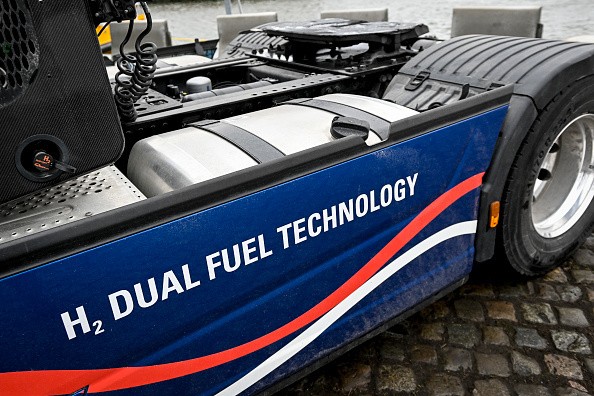According to Penn State scientists, a novel, extremely sensitive technique for detecting hydrogen gas generation might play an essential role in the fight to develop hydrogen as an ecologically benign and cost-effective alternative to fossil fuels.
Hydrogen power for renewable energy

As per ScienceDaily, Venkatraman Gopalan, professor of materials science and engineering and physics at Penn State, developed the world's most sensitive technology for detecting hydrogen evolution.
This addresses a previously unaddressed issue that will be critical in the future of materials discovery.
According to scientists, the technique may be used to screen prospective photocatalysts, which are materials that, when placed in water and exposed to sunshine, stimulate reactions that split water molecules into hydrogen and oxygen gases.
The water-splitting process provides a clean and sustainable supply of hydrogen, but it is inefficient, and finding the correct photocatalysts to improve hydrogen production has proven difficult.
The researchers discovered that they could test lower quantities of photocatalyst material than previously conceivable and identify extremely minute amounts of hydrogen gas created, or hydrogen evolution, in the tens of nanomoles per hour per tens of milligrams of material.
Photocatalyst development is a hotly debated topic.
Scientists at Penn State, led by Ismaila Dabo, associate professor of paraphernalia science and engineering, lately applied a supercomputer to constrict down a list of over distinctive chemicals to six implicit choices.
Another team, led by DuPont Professor of Materials Chemistry Raymond Schaak, synthesized the materials in their laboratory, but even modest volumes are expensive and time-consuming to produce.
The process of hydrogen to renewable energy
The cosmos is made up of a diverse set of elements. Each component plays an important function in the world's composition.
Hydrogen, nitrogen, and oxygen are the most prevalent elements in the universe.
Hydrogen is the most abundant component, accounting for 75% of the universe, and it plays a larger part in the sustainability of life, as per Conserve Energy Future.
Aside from assisting other living creatures in survival, hydrogen may be used to create energy. It may be found in practically all plant matter and is also found naturally in water.
Electrolysis a process that includes passing a strong electric current through water to separate hydrogen and oxygen atoms is used to recover hydrogen gas from water.
Because of the large energy expenditure, the electrolysis procedure is rather costly.
The energy utilized in the electrolysis process is derived from fossil fuels such as oil, natural gas, or coal. It may also be derived from renewable energy sources such as solar, wind, and hydropower to eliminate greenhouse gas emissions.
What is renewable energy?
Renewable energy is defined as energy created by natural processes that are constantly renewed.
Sun energy, geothermal heat, wind, tides, water, and other classes of biomass are all exemplifications. This power is never depleted and is continually replenished, as noted by Penn State University.
Alternative energy is a word used to describe an energy source that is not derived from fossil fuels.
In general, it denotes non-traditional energy sources with little environmental effect.
According to some sources, the phrase alternative is used to contrast with fossil fuels.
As per most definitions, alternative energy does not affect the environment, which distinguishes it from renewable energy, which may or may not have a major environmental impact.
© 2025 NatureWorldNews.com All rights reserved. Do not reproduce without permission.





